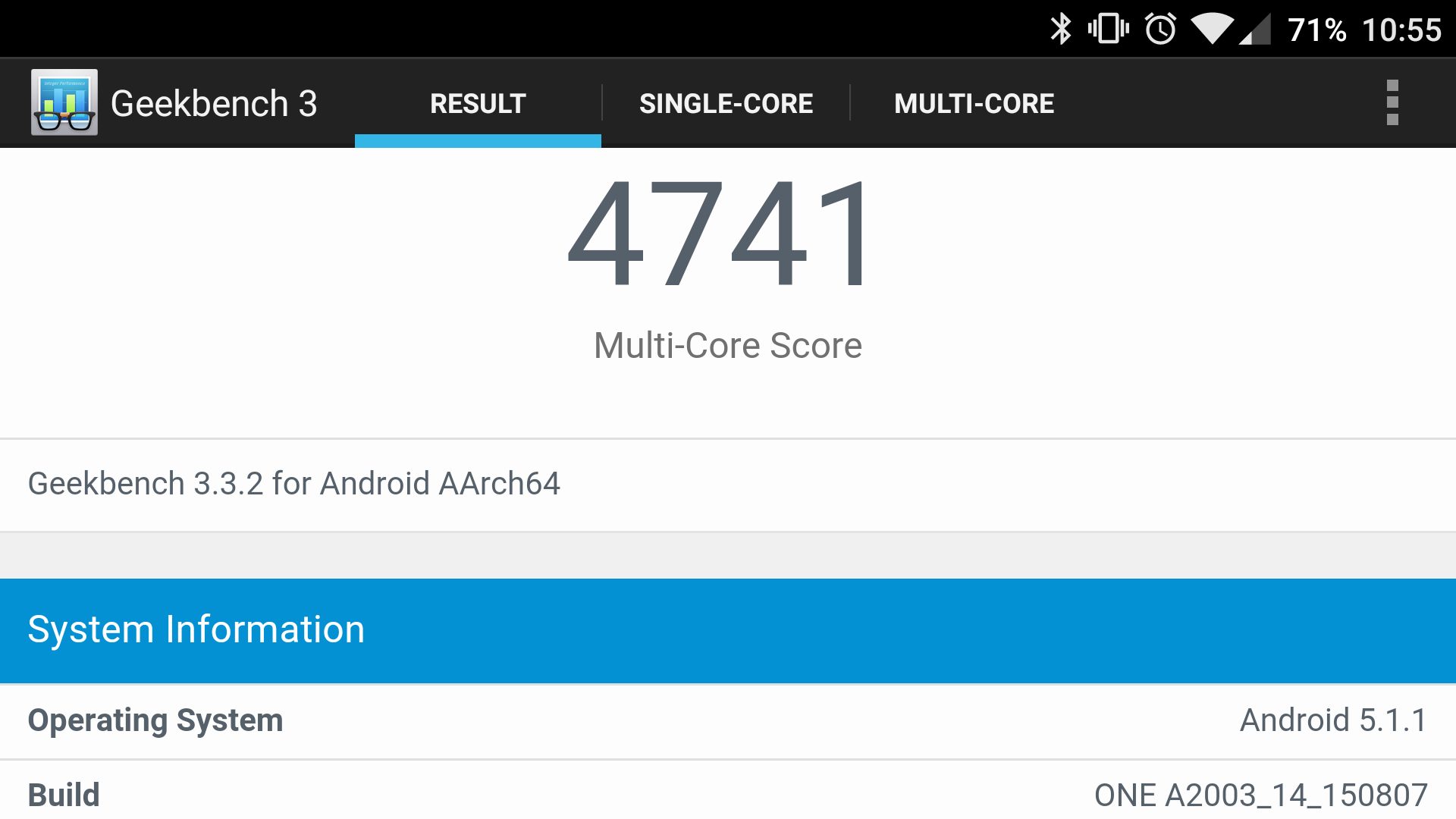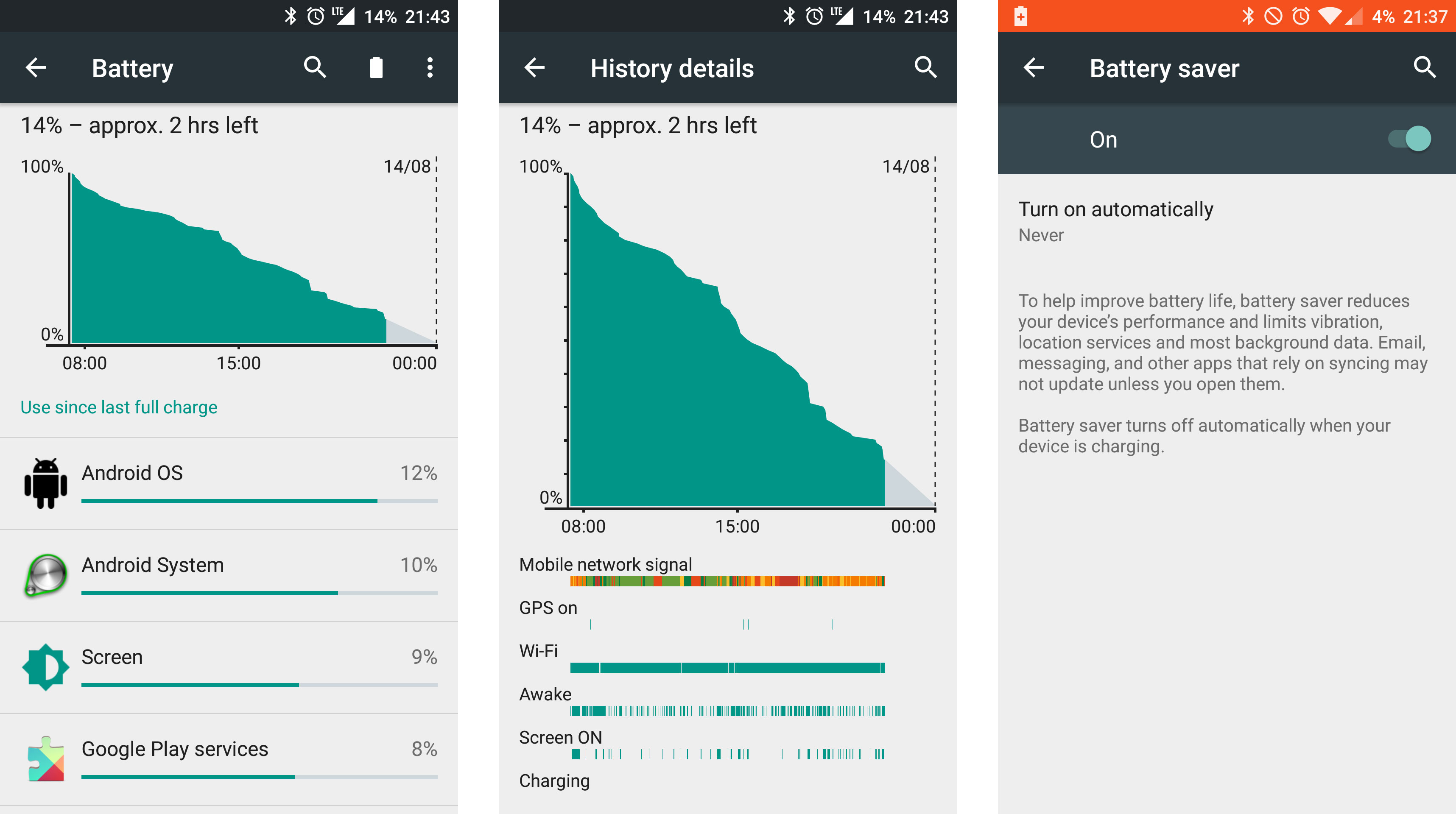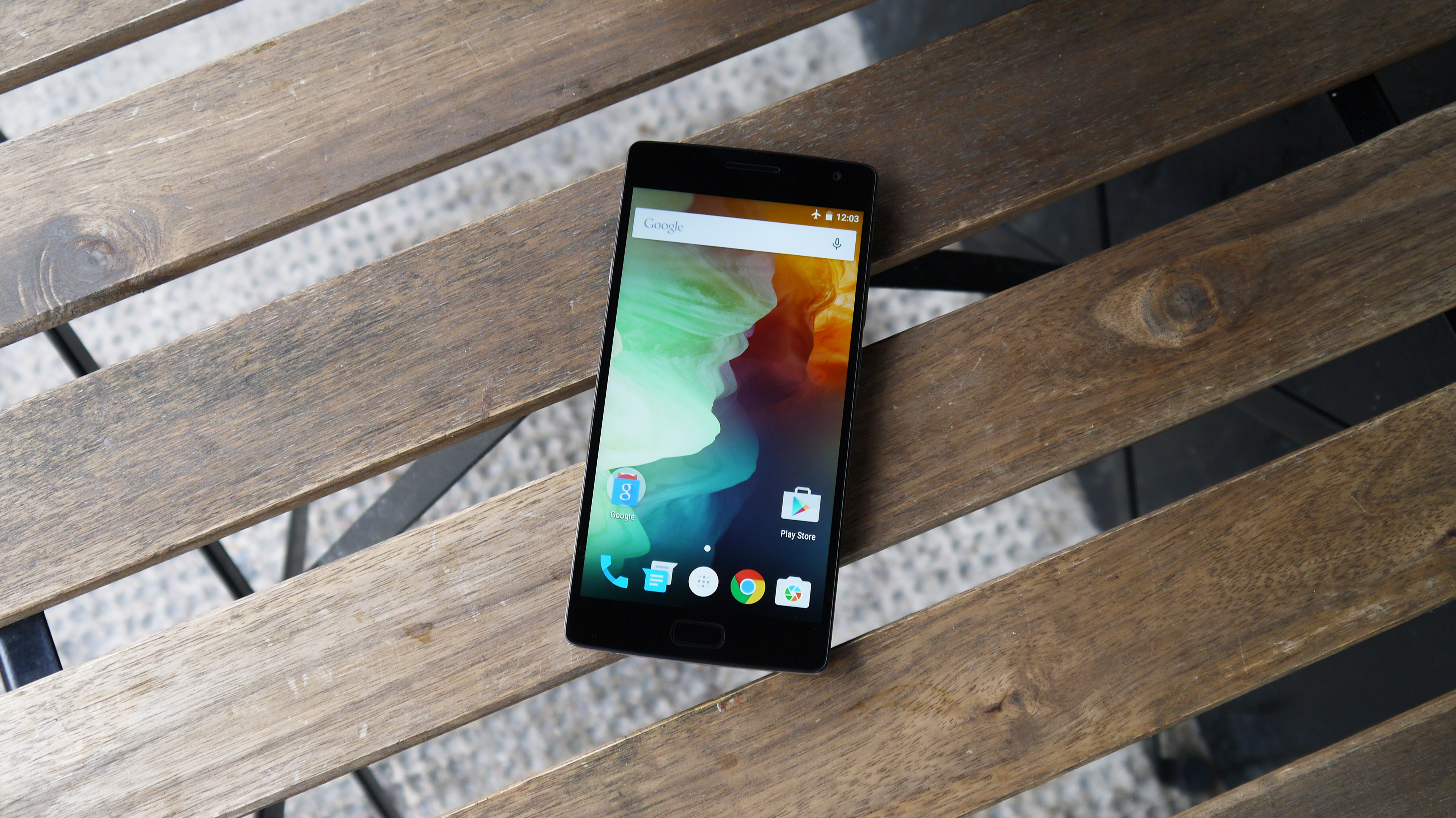Why you can trust TechRadar
Performance
- Rivals 2015's best flagships
- Software updates have made performance better than ever
With an octa-core Snapdragon 810 processor and huge 4GB of RAM, the OnePlus 2 is packing a lot of power, and for the most part that shines through, whether it's loading up a power-intensive game or just having several apps on the go at the same time, the OnePlus 2 handles heavy-lifting tasks with ease.
I found it doesn't get as hot as some of the other Snapdragon 810-toting phones – the HTC One M9 and Sony Xperia Z3+ being the main culprits – but it can warm up during an extended session of Family Guy: the Quest for Stuff, or if you use it while charging.
The bottom half of the handset gets the warmest, and you'll certainly notice it, but it doesn't get hugely uncomfortable.

When we first reviewed this phone, all that power appeared to be lacking. The touch-sensitive home key below the screen didn't always register my touch, and sometimes I had to prod at it three or four times before I could exit an app.
But since using the phone a little more after some updates, OnePlus seems to have fixed this feature. If you find it's an issue, it's worth checking you've got the latest up to date software on your OnePlus 2.
Another area where I've noticed a drop in performance was in the dialer. I enter a number, hit dial and for a second or two the OnePlus Two displays the previous screen on the phone before popping up the call window.
It's just long enough to make you think that maybe you didn't hit dial, and accidentally hit back, which can get pretty annoying.
Sign up for breaking news, reviews, opinion, top tech deals, and more.

Performance is up there with the best of 2015's handsets, with the OnePlus 2 averaging 4795 on the Geekbench 3 test, which isn't far off the Samsung Galaxy S6 (4850) and comfortably above the One M9 (3800) and iPhone 6 (2905).
Of course it's been comfortably topped by 2016's crop of flagships, including the OnePlus 3, which scored 5425.
The OnePlus 2 has all the tools at its disposal for a fast, fluid user experience, but it feels like the software on the phone is currently holding it back from offering a top-notch interface.
These are things which can hopefully be fixed in a software update – and if they are then this is a seriously impressive showing from the OnePlus 2.
Battery life
- The 3300mAh battery will comfortably last you a day
- Worse performance in video tests than the OnePlus One or OnePlus 3
I've already talked about the fancy new USB-C port on the base of the OnePlus 2, so I'll great straight into the meat of the battery facts here.
The OnePlus Two boasts a larger battery than its predecessor, with the power pack getting a boost from 3100mAh to 3300mAh. In fact, it's got a bigger juice pack than even the OnePlus 3, which drops the size to 3000mAh.
With the screen size and resolution remaining the same between generations I was relatively hopeful for a strong battery showing from the OnePlus 2 – although with increased power under the hood, and a more insulated metal frame, it's not wise to get one's hopes up too high.
Even though you can remove the back plate of the OnePlus 2, as with the OnePlus One you can't gain access to the battery itself as it's sealed inside the handset. That won't be an issue for many, but for those who like the flexibility of carrying a spare, fully charged battery it will be frustrating.

The fact that the battery is locked away is made more annoying by the omission of fast charging and wireless charging on the OnePlus 2.
These aren't make-or-break features, but given the '2016 Flagship Killer' tagline and the 'Never Settle' motto it seems odd that at least one of the two weren't included.
So how does the meaty battery inside hold up? You'll get a full day of use from the OnePlus 2 on a single charge without too much hassle – and that includes pushing it hard a few times throughout the day.
I never got to bed with more than 20% left in the tank however, so if you're looking for a phone which will give you a day-and-a-half to two days of life from one charge this isn't the one for you.
That said, the battery life on the OnePlus 2 is on par with the phones it's looking to compete with – and the power-saving mode can help you get the most from your last 20%, with background data turned off and screen brightness kept at a lower level.

The main battery drainer is Android itself, which means improving battery life on the handset isn't particularly easy from your side, although OnePlus may be able to make some efficiencies with future updates.
I ran the 90-minute, full HD TechRadar video test on the OnePlus Two with screen brightness on max, and with accounts syncing in the background thanks to a connected Wi-Fi network.
After the 90 minutes were up the battery had dropped from 100% to 73% – a loss of 27%. That's not close to the Galaxy S6, LG G4 or OnePlus One, which lost 16%, 15% and 17% respectively. It's also worse than the OnePlus 3, which lost 23%.
It's not all bad news though, as in this particular test the OnePlus 2 finds itself on par with the iPhone 6 Plus (27%) and HTC One M9 (31%).
Battery life then is acceptable on the OnePlus 2 – and considering the price and spec sheet it's actually a rather impressive performance.

TechRadar's former Global Managing Editor, John has been a technology journalist for more than a decade, and over the years has built up a vast knowledge of the tech industry. He’s interviewed CEOs from some of the world’s biggest tech firms, visited their HQs, and appeared on live TV and radio, including Sky News, BBC News, BBC World News, Al Jazeera, LBC, and BBC Radio 4.
